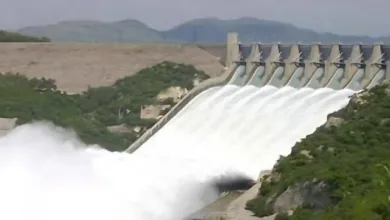Plants Absorb More CO2 Than Thought


Nuclear bomb testing data from the 1960s shows Earth system models underestimate carbon uptake by plants and soils. The carbon storage is shorter-lived than thought, affecting climate predictions. Accurate models need better global carbon cycle representation.
Radiocarbon analysis reveals that Earth system models underestimate the carbon uptake in terrestrial ecosystems and suggest quicker carbon turnover, highlighting the need for more accurate climate modeling.
Radiocarbon analysis from nuclear bomb tests in the 1960s indicates that existing Earth system models might be underestimating how much carbon terrestrial vegetation and soils absorb. However, according to the researchers, this carbon storage is more temporary than once believed. This implies that man-made carbon dioxide may not remain in the terrestrial biosphere as long as current models suggest. For climate predictions to be precise and to aid in crafting effective climate policies, it’s essential to accurately represent the global carbon cycle.
It’s thought that vegetation and soils account for taking up approximately 30% of anthropogenic carbon dioxide (CO2) emissions, yet the processes underlying the net CO2 sink into the terrestrial biosphere are poorly constrained. This is particularly true for processes involved in global net primary productivity (NPP) – the rate at which plants produce new tissues from atmospheric CO2 – and for carbon turnover rates.
Radiocarbon Tracking and NPP Evaluation
Current NPP estimates vary widely due to reliance on statistical or model-based predictions and limited site-scale measurements. Nuclear bomb testing in the 1950s and 1960s increased atmospheric radiocarbon (14C), which was absorbed by the terrestrial biosphere. Tracking the accumulation of bomb radiocarbon in the biosphere post-nuclear testing could help evaluate NPP and carbon turnover rates. However, direct observation of global 14C accumulation has been a challenge. Heather Graven and colleagues address this by combining a new budget of radiocarbon produced by nuclear bombs with model simulations to provide a top-down constraint on global NPP for the 1960s (1963 to 1967).
Graven et al. found that current models underestimate the magnitude of NPP in the 1960s. According to the findings, NP in the 1960s was at least 63 petagrams of carbon per year (PgC/yr), which implies a current rate of 80PgC/yr given increases in productivity over time. This is more than the 43 to 76 PgC/yr that current models predict. Graven et al. argue that this discrepancy is due to underestimating the carbon stored in short-lived or non-woody plant tissues.
“Because the uptake and turnover of carbon are the main controls on the anthropogenic CO2 sink in the terrestrial biosphere, the results of our study suggest that the storage of anthropogenic carbon in the terrestrial biosphere is likely more short-lived and more vulnerable to future changes than previously thought,” Graven et al. write.
Reference: “Bomb radiocarbon evidence for strong global carbon uptake and turnover in terrestrial vegetation” by Heather D. Graven, Hamish Warren, Holly K. Gibbs, Samar Khatiwala, Charles Koven, Joanna Lester, Ingeborg Levin, Seth A. Spawn-Lee and Will Wieder, 20 June 2024, Science.
DOI: 10.1126/science.adl4443



